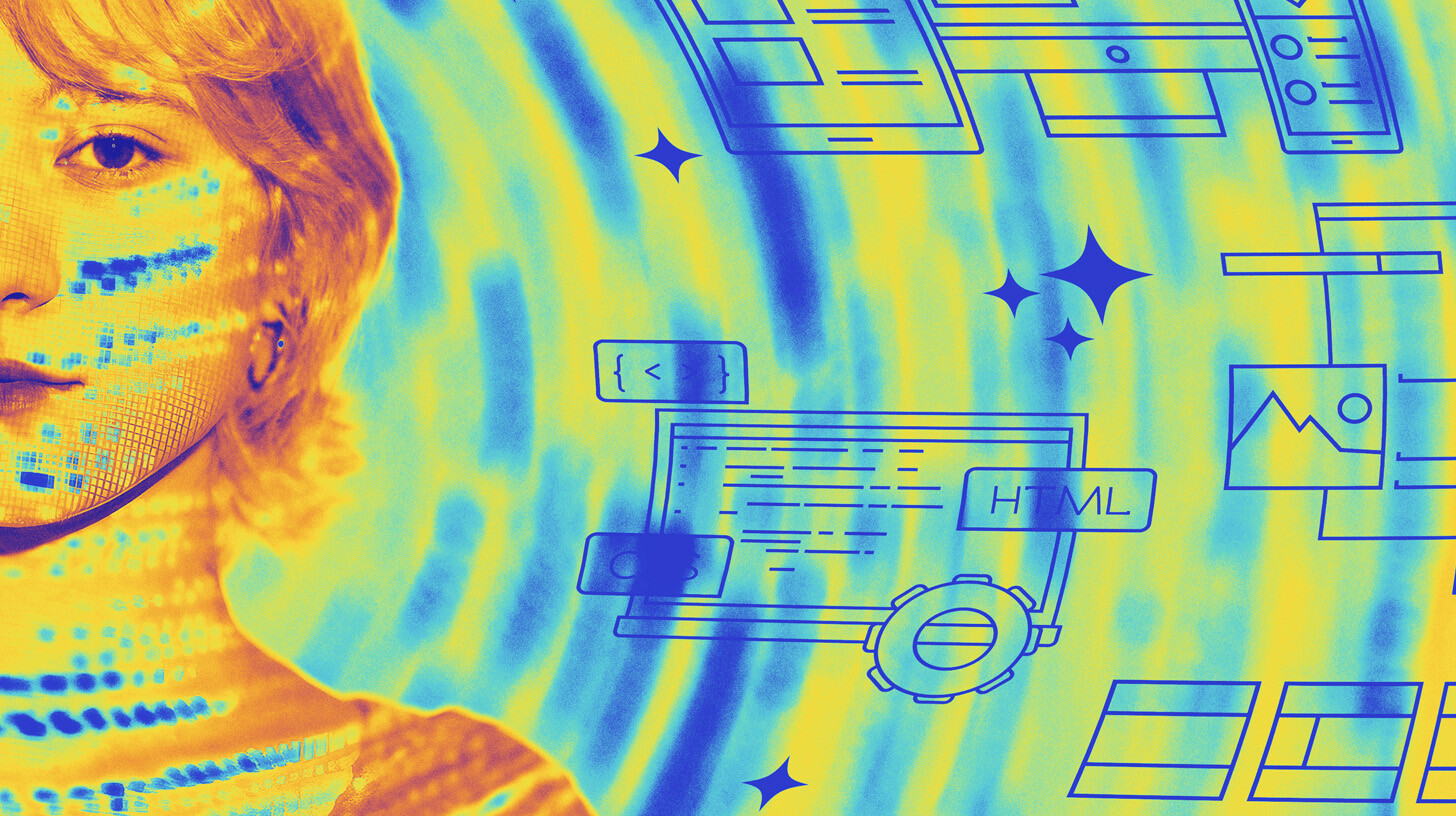The user experience design process is evolving at an unprecedented rate, largely driven by advances in artificial intelligence (AI). As businesses strive to enhance digital interactions, AI's role in UX design has become more crucial than ever, offering a sophisticated blend of efficiency and insight. This integration streamlines the design process to ensure that digital platforms are more intuitive, responsive, and tailored to user needs. This post explores how AI is revolutionizing the UX design process, from initial user research to the final stages of implementation, providing practical insights for those considering its adoption.
Tip: When considering AI integration, identify specific areas in your UX process that could benefit most from automation and enhanced analysis, such as data-heavy tasks or iterative design testing.
Understanding AI’s Role in UX Design
AI transcends traditional boundaries in UX design, applying advanced algorithms to reshape user research, prototyping, and testing approaches. Machine learning, natural language processing, and predictive analytics are pivotal in analyzing and interpreting complex user data to enable a more dynamic design process. Tools like Evolv AI further enhance this capability by leveraging continuous learning algorithms to refine and optimize user experiences based on real-time interactions.
- Machine Learning
ML algorithms learn from user interactions to continually improve the design recommendations without explicit programming. Machine learning for customer data must adapt to changes in user behavior, making UX designs more relevant over time. - Natural Language Processing
NLP helps understand and process human language, allowing for the analysis of user feedback, support queries, and social media conversations for deeper UX insights. - Predictive Analytics
This aspect of AI anticipates user needs and future behaviors based on historical data, allowing designers to adjust UX elements proactively to enhance user satisfaction.
By integrating these AI technologies, businesses can automate significant portions of the UX design process, achieving faster and more accurate outcomes. This approach saves time and resources and enables a deeper understanding of the user. AI-driven personalization leads to more bespoke and engaging digital experiences.
Tip: Evaluate AI tools based on their ability to integrate with existing systems and their support for scalable machine learning models that adapt to your users’ evolving behaviors.
Streamlining User Research with AI
AI revolutionizes user research by automating the collection and analysis of user data, providing a faster and more comprehensive understanding of user behaviors and preferences. AI-driven analytics tools can process large volumes of data from various sources such as website interactions, mobile app usage, and IoT devices to uncover user patterns and needs. For example, Evolv AI can analyze clickstream data to identify common drop-off points or barriers in the user journey, enabling designers to focus their efforts on critical areas for improvement.
- Automated Surveys and Feedback Analysis
AI technologies streamline the user feedback collection process, utilizing natural language processing to analyze open-ended survey responses. This allows UX teams to quickly gather and interpret complex user sentiments and translate them into actionable design insights. - Behavioral Prediction Models
AI models can predict user behaviors by analyzing past interactions, helping UX designers to anticipate user needs and tailor the digital experience accordingly.
These AI-enhanced methods ensure that user research is quicker and deeper, providing a solid foundation for user-centric design strategies.
Tip: Select AI tools that offer robust data collection capabilities across multiple touchpoints. This ensures a comprehensive dataset for more accurate behavior analysis and user modeling.
Enhancing Prototyping and Testing with AI
AI significantly impacts the prototyping and testing phases of the UX design process by enabling rapid iteration and more precise validation of design concepts. AI multivariate testing tools, including those offered by Evolv AI, can automatically generate design variations based on user data, allowing designers to create and test multiple user interface versions quickly. This accelerates the iterative design process and helps identify the most effective designs sooner.
- Dynamic Prototyping
AI tools can adjust design elements in real-time during user testing sessions based on user interactions and feedback. This adaptive approach to prototyping allows for more nuanced refinements and ultimately leads to a more user-friendly product. - Automated A/B Testing
By employing AI, businesses can automate the setup and analysis of A/B tests, quickly determining the best-performing design elements based on statistical analysis and machine learning predictions.
Integrating AI into prototyping and testing shortens the development cycle and enhances the precision of design decisions, ensuring that the final product resonates well with the target audience.
Tip: Choose AI platforms that provide dynamic prototyping tools for real-time adjustments based on user feedback during testing phases. This will help you iterate on designs more quickly and effectively.
Leveraging AI for User Feedback Integration
AI's capacity to integrate user feedback into the UX design process is transformative, ensuring that products evolve in line with user expectations. AI systems analyze feedback from multiple channels, such as social media, user reviews, and in-app feedback forms, to identify common issues and areas for improvement. This comprehensive analysis helps designers understand which aspects of their product resonate well and which need refinement.
For instance, suppose a digital media app uses AI to analyze user feedback about its navigation interface. The AI could identify that users frequently mention difficulty finding certain features. Using this insight, UX designers can prioritize redesigning the navigation menu to make these features more accessible, enhancing user satisfaction and engagement.
Tip: Ensure that the AI tool you select excels in natural language processing (NLP) to analyze open-ended user feedback and social media data effectively. This capability is crucial for translating user sentiments into actionable design improvements.
Challenges and Considerations
Implementing AI in UX design introduces challenges, including ensuring privacy and managing the potential bias in AI algorithms. Ethical considerations must be addressed to maintain trust and compliance. Evolv AI provides an example of how these challenges can be managed responsibly with robust data protection measures and transparent AI processes.
Tip: Be proactive about addressing potential ethical and privacy concerns by choosing AI solutions that comply with international data protection regulations and provide transparent data processing methodologies.
Conclusion: Embracing AI in the UX Design Process
Integrating AI into the UX design process marks a significant leap forward in our approach to digital product development. By automating the analysis, enhancing personalization, and systematically incorporating user feedback, AI streamlines the design process and ensures that the end products align more closely with user needs and expectations.
Adopting AI-driven tools and methodologies in UX design is necessary for businesses aiming to stay competitive in a rapidly evolving digital landscape. As AI technology advances, its role in UX design will only grow, offering more sophisticated tools and insights to help designers create more engaging and effective user experiences.
Tip: Continuously monitor the performance and impact of AI tools on your UX design process. Regular audits and adjustments based on outcomes will help you optimize the use of AI and ensure that it aligns with your strategic goals.
FAQs about AI in UX Design
Q: What is AI in UX design?
AI in UX design refers to applying artificial intelligence technologies, such as machine learning, natural language processing, and predictive analytics, to enhance user experience design processes. AI helps automate data analysis, personalize user interactions, and make real-time adjustments based on user feedback.
Q: How does AI improve the UX design process?
AI improves the UX design process by enabling more efficient and accurate user research, automating the creation and testing of prototypes, and providing insights that help designers make informed decisions. For example, AI can predict user behavior, personalize content, and quickly iterate design concepts based on user feedback.
Q: Can AI in UX design lead to better user engagement?
Yes, AI can significantly enhance user engagement by personalizing user experiences based on individual behavior and preferences. AI-driven systems analyze user data to tailor interfaces, recommend content, and adjust navigation elements in real-time, ensuring a more relevant and engaging experience for each user.
Q: What are some challenges of integrating AI into UX design?
Integrating AI into UX design presents challenges such as ensuring data privacy, managing the complexity of AI technologies, and maintaining the balance between AI and human creativity. Additionally, continuous monitoring is needed to mitigate biases that AI systems might learn from historical data.
Q: What should I look for in AI tools for UX design?
When selecting AI tools for UX design, look for features that support extensive data analysis capabilities, real-time processing, and flexibility to adapt to different user scenarios. Tools should also be user-friendly and integrate seamlessly with existing design platforms. Additionally, consider tools that provide robust support and training resources to help your team maximize their use.
Want to learn more? Book a time with one of our experts to discover how Evolv AI can revolutionize your user experience.


 Megan Wells
Megan Wells



